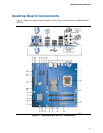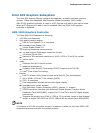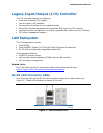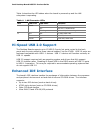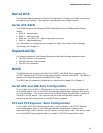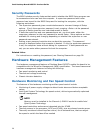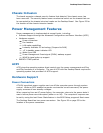Desktop Board Features
19
Serial ATA
The Desktop Board supports six Serial ATA channels (3.0 Gb/s) via ICH9R, connecting
one device per channel. One channel is configured as an eSATA channel.
Serial ATA RAID
The ICH9R supports the following RAID (Redundant Array of Independent Drives)
levels:
• RAID 0 - data striping
• RAID 1 - data mirroring
• RAID 0+1 (or RAID 10) - data striping and mirroring
• RAID 5 - distributed parity
For information on configuring your system for RAID using Intel
®
Matrix Storage
Technology see Chapter 4.
Expandability
For system expansion, the Desktop Board provides the following expansion slots:
• Two PCI Express x1 connectors
• One PCI Express x16 connector
• One PCI bus connector
BIOS
The BIOS provides the Power-On Self-Test (POST), the BIOS Setup program, the
PCI/PCI Express and IDE auto-configuration utilities, and the video BIOS. The BIOS is
stored in the Serial Peripheral Interface (SPI) Flash.
The BIOS can be updated by following the instructions on page
63 in Chapter 3.
Serial ATA and IDE Auto Configuration
If you install a Serial ATA or IDE device (such as a hard drive) in your computer, the
auto-configuration utility in the BIOS automatically detects and configures the device
for your computer. You do not need to run the BIOS Setup program after installing a
Serial ATA or IDE device. You can override the auto-configuration options by
specifying manual configuration in the BIOS Setup program.
PCI and PCI Express* Auto Configuration
If you install a PCI/PCI Express add-in card in your computer, the PCI/PCI Express
auto-configuration utility in the BIOS automatically detects and configures the
resources (IRQs, DMA channels, and I/O space) for that add-in card. You do not need
to run the BIOS Setup program after you install a PCI/PCI Express add-in card.



